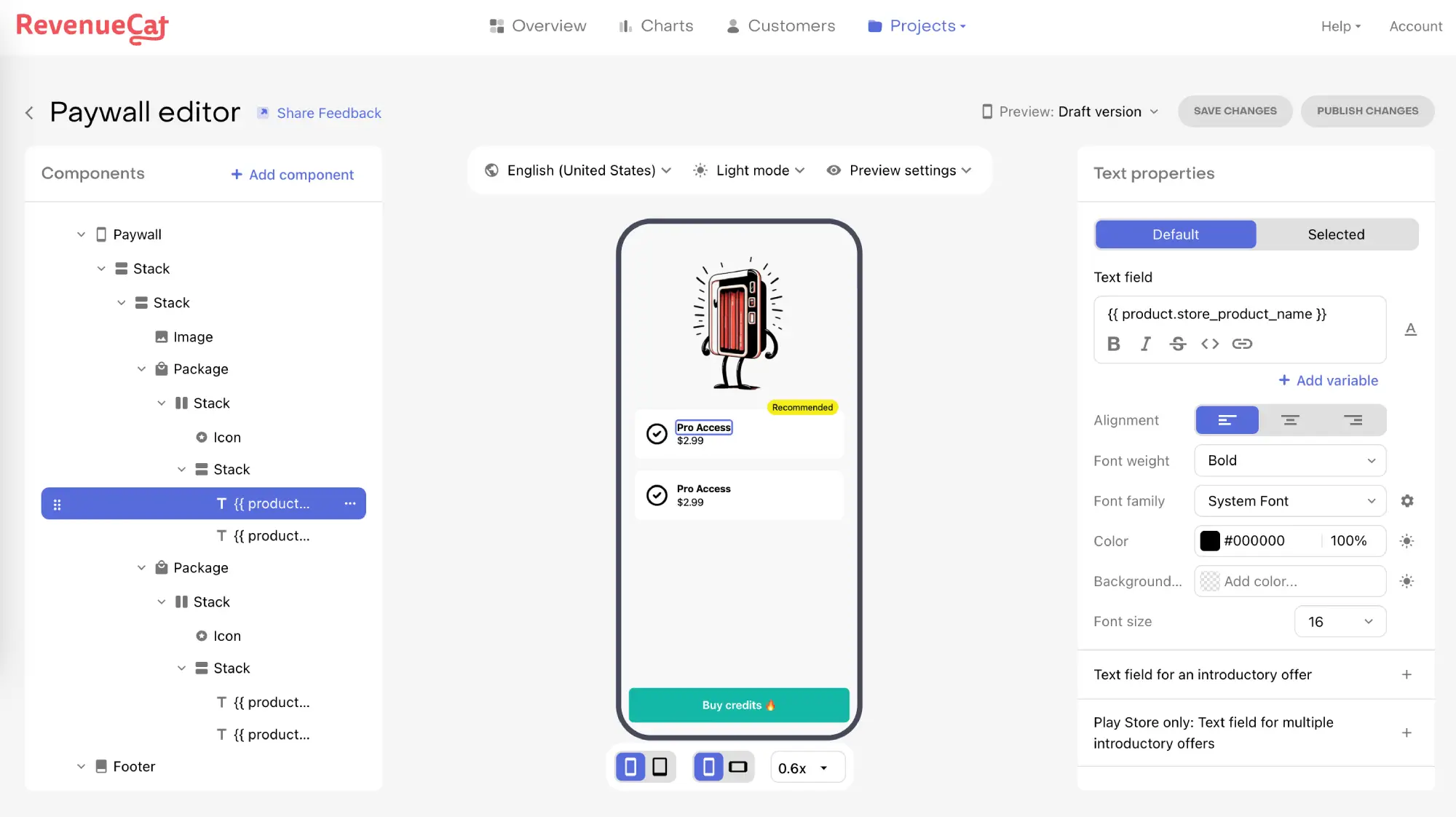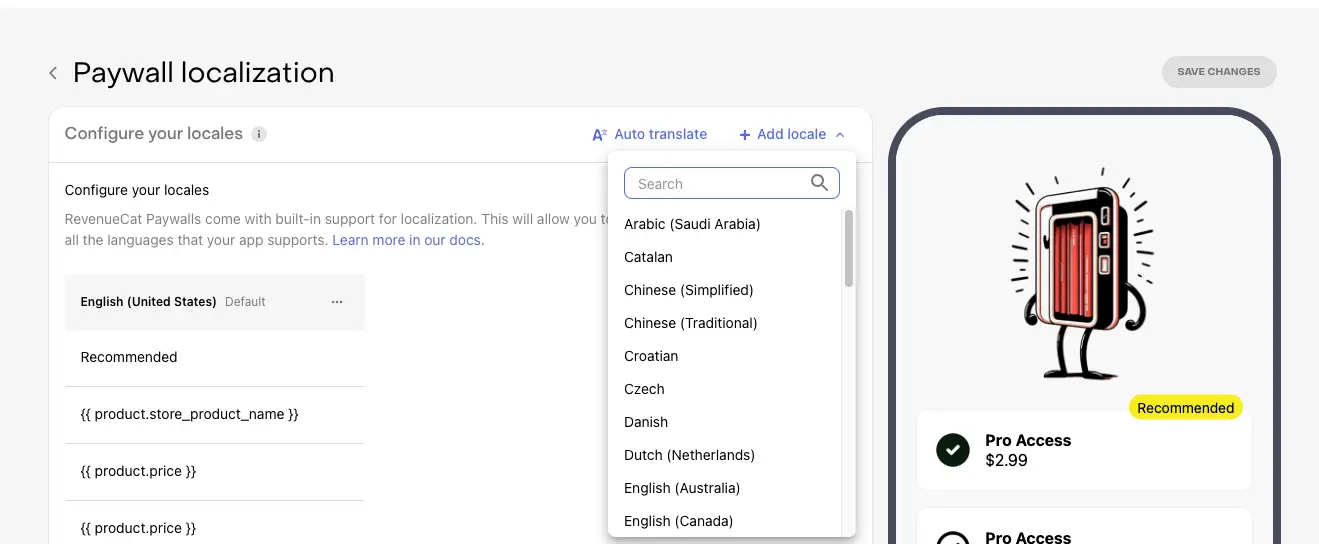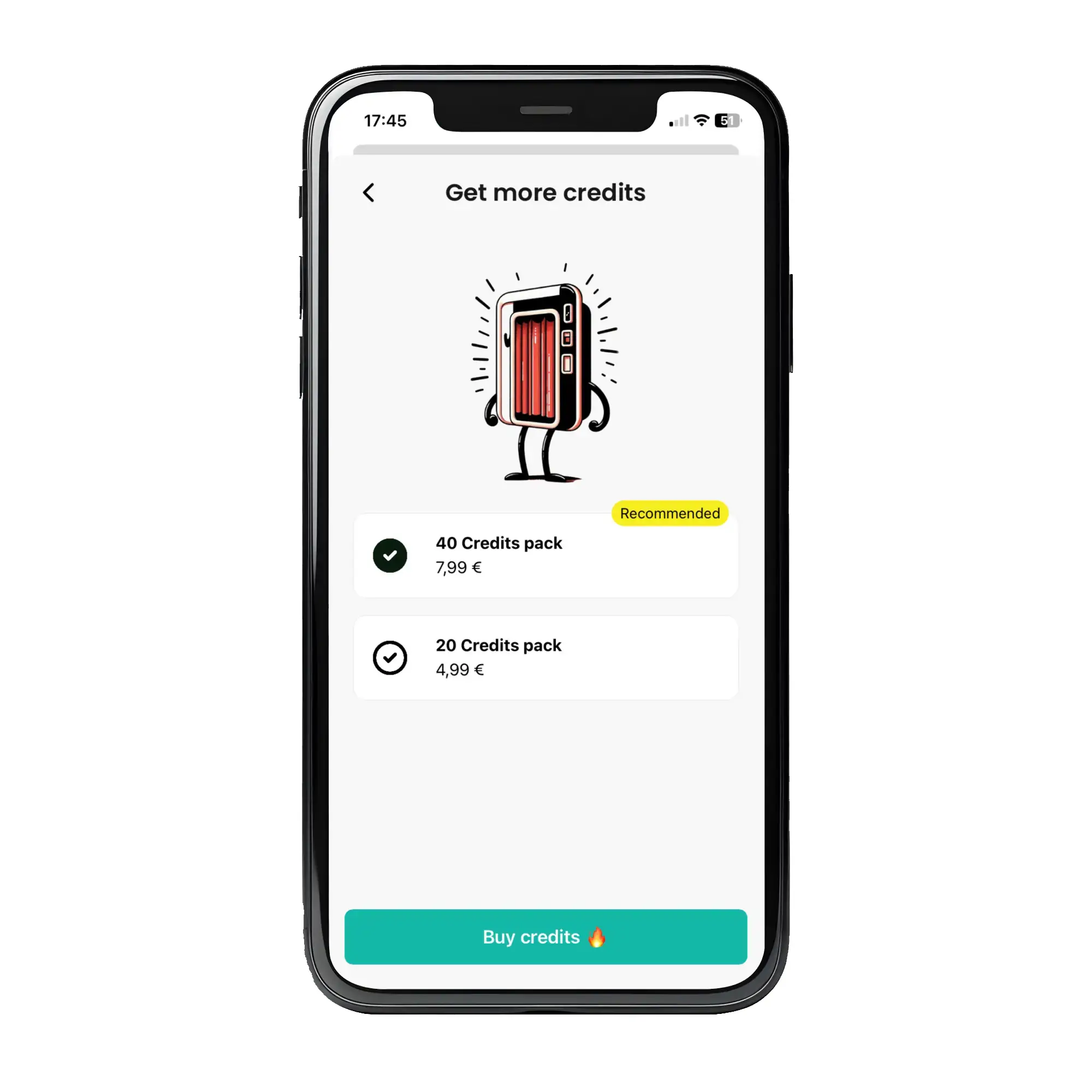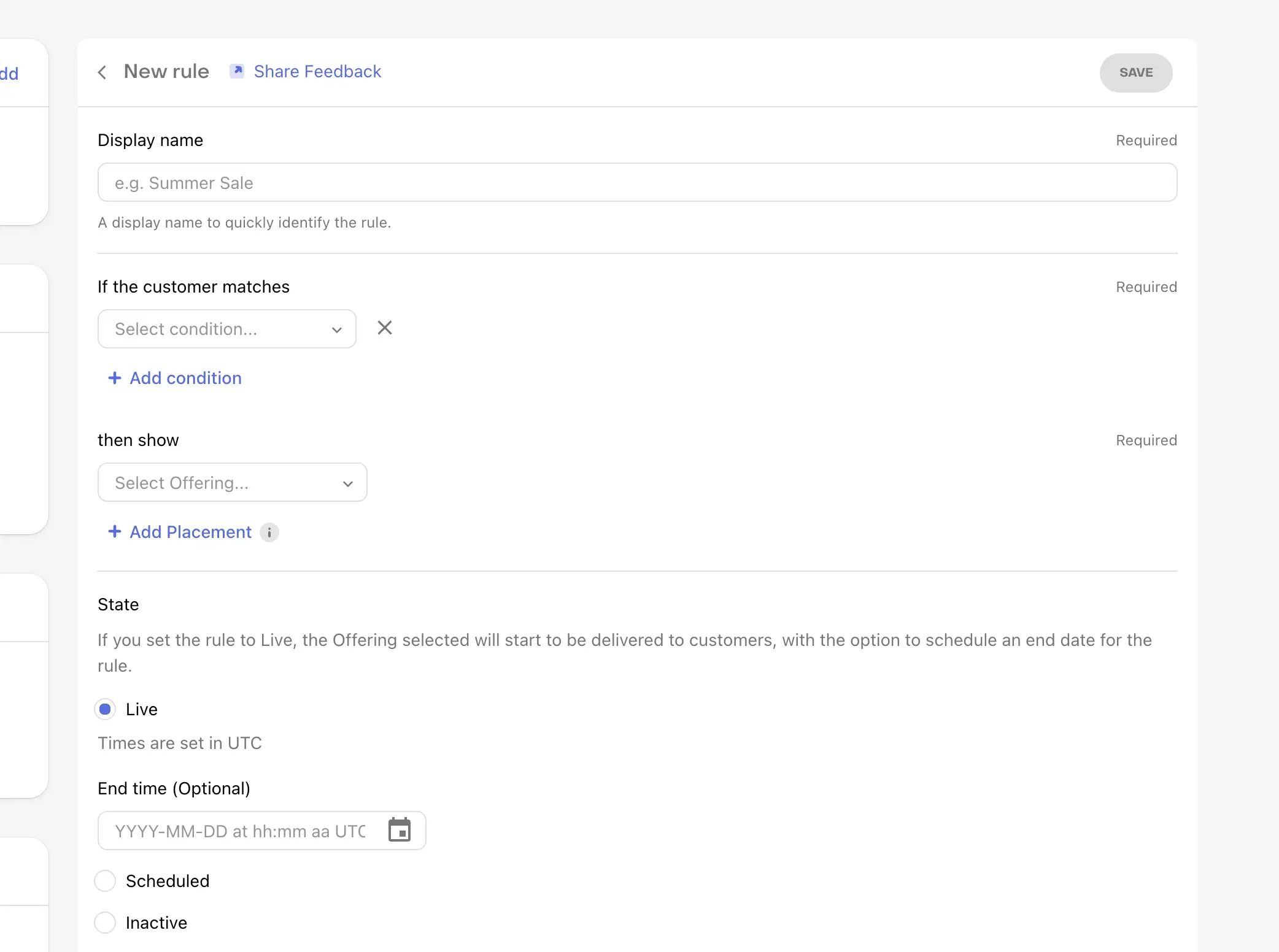18 mars 2025
RevenueCat x Expo: A Turnkey Solution for Payments and Subscriptions
5 minutes reading

The subscription and in-app purchase monetization model has become essential in mobile app development. However, implementing it can be complex due to platform differences (iOS and Android) and store regulations.
Simplifying and unifying payment management for developers is the promise of RevenueCat. At Premier Octet, we recently integrated this platform into one of our Expo projects, Photobooth AI, giving us the opportunity to explore its capabilities.
A Seamless Paywall Setup
RevenueCat allows you to design and integrate a paywall directly into your application with just a few lines of code using its SDK. Here are the necessary steps:
Step 1 - Account and Product Setup
Start by creating an account on RevenueCat and linking your apps (Android / iOS / Stripe) to the platform.

Once connected, you can import the products you want to use on the paywall from the Product Catalog / Products tab.
⚠️ The products you wish to sell must first be created in the Apple and Google stores before being imported into RevenueCat.
You have two options:
- Automatic import: RevenueCat retrieves all available products from your stores.
- Manual import: You manually add products by entering their identifiers.
Once imported, you can assign display names to your products for better readability. You can also group similar products (e.g., 20 iOS credits and 20 Android credits) and experiment with different offers by combining them using Offerings.
Step 2 - Creating the Paywall
RevenueCat offers a full-featured paywall editor, integrating a library of components (text, images, buttons, and layouts) to design a page that matches your app’s branding.

⚠️ Version 2 of the editor, launched in late January, is still in beta. During our implementation, a bug (now fixed) prevented the custom design from displaying on Android, forcing the default design. If deploying a paywall in production, stay vigilant as adjustments may still be necessary.
If your app is multilingual, the editor includes a translation manager supporting the 39 locales of the App Store, allowing you to localize your paywall effortlessly.

ℹ️ RevenueCat automatically uses the device language, with no option to modify it using other user preferences from your app. However, a default language can be set from the paywall editor.
Step 3 - Integrating the RevenueCat SDK into Our Expo App
To retrieve products and integrate the paywall design into our Expo app, we use RevenueCat’s react-native-purchases and react-native-purchases-ui libraries.
npx expo install react-native-purchases react-native-purchases-ui
Once the SDK is installed, configure it with your store API keys at the root of your application:
import Purchases from 'react-native-purchases'
import { Platform } from 'react-native'
useEffect(() => {
Purchases.setLogLevel(Purchases.LOG_LEVEL.DEBUG)
if (Platform.OS === 'ios') {
Purchases.configure({
apiKey: process.env.EXPO_PUBLIC_KEY_IOS,
})
} else {
Purchases.configure({
apiKey: process.env.EXPO_PUBLIC_KEY_ANDROID,
})
}
}, [])
You can then display your paywall anywhere in your app using the RevenueCatUI.Paywall component:
import { View } from 'react-native'
import RevenueCatUI from 'react-native-purchases-ui'
return (
<View style={{ flex: 1 }}>
<RevenueCatUI.Paywall
options={{ offering: offering }}
onDismiss={() => {
// Called after a purchase or when closing the paywall
}}
/>
</View>
)
Our products are now available on Android and iOS! No need to update the app for every design change—RevenueCat automatically displays the new paywall.

Managing Subscriptions
RevenueCat simplifies subscription management by associating user entitlements with purchases via Entitlements. Each entitlement corresponds to an ID defining a user’s status (e.g., premium, gold) linked to the purchased products.
Once a subscription is active, the SDK makes it easy to retrieve the user’s status by identifying the entitlements associated with their active subscriptions:
const customerInfo = await Purchases.getCustomerInfo()
const activeEntitlements = customerInfo.entitlements.active
⚠️ The SDK updates the cache if the data is over 5 minutes old, but only when a purchase is made
or getCustomerInfo() is called. To ensure up-to-date premium content access, call
getCustomerInfo() whenever a user accesses premium content.
RevenueCat: A Turnkey Solution for Subscription Payments
RevenueCat offers many features to simplify subscription management, including:
- Displaying promotional offers directly on paywalls to attract new subscribers.
- Managing payment errors with grace periods, ensuring temporary access while awaiting payment.
- The ability to switch between different offers (upgrade/downgrade).
- A direct link to the corresponding store to cancel a subscription via the
managementURLproperty inCustomerInfo.
Testing Sales Strategies
RevenueCat's modular products and ease of creating paywalls make it an ideal platform for testing different layouts and measuring their impact on sales. Several tools are available for this purpose:
Targeting: Customize Offer Display
The Targeting tab allows you to define rules to direct each user to the most relevant offer.

RevenueCat offers two targeting strategies:
- By app placement: Offers vary depending on where the user accesses the paywall (e.g., after onboarding for new users). Simply use
getCurrentOffering(forPlacement: "placementIdentifier")in the SDK to retrieve the associated offer and display it viaRevenueCatUI.Paywall. - By user attributes: Offer display is based on specific criteria (e.g., responses to an onboarding survey). Update user attributes with
setAttributes()to dynamically adapt the presented offer.
Experiments: Optimize Offers with A/B Testing
Experiments enable testing and comparing different offers by randomly assigning them to user groups following the A/B testing principle. Once configured and integrated into an Experiment, RevenueCat automatically displays either version A or version B to users. Performance metrics, including conversion rates and revenue generated, are analyzed on a dedicated page, helping you choose the most effective offer.
Pricing
RevenueCat's pricing model is based on your app's generated revenue. The free tier allows access to all platform features as long as your gross monthly revenue does not exceed $2,500. Beyond this threshold, a 1% fee on gross monthly revenue applies. This cost should be considered for high transaction volumes.
Conclusion
RevenueCat significantly simplifies subscription and payment management, offering a seamless experience and quick integration. The generous free tier allows businesses to start without constraints, and centralizing offers across platforms is a major advantage. While some features, like the paywall editor, are still evolving and may have minor flaws, RevenueCat largely delivers on its promises! ✅
